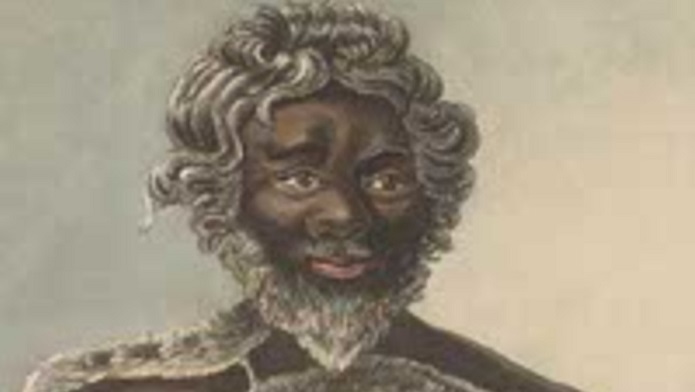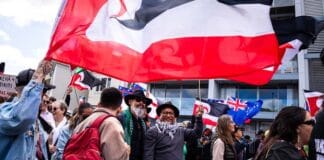Stephen Gapps’ book Gudyarra is a compelling account of the opening phase of the genocidal invasion of Wiradyuri lands by British imperialism and the fierce anti-colonial insurgency waged by Wiradyuri people.
Gapps demonstrates how the expansion of pastoralism in colonial NSW was a thoroughly militarised process, with strategic concerns about how best to respond to Aboriginal resistance guiding when, where and how new settlements were established.
The story centres around Bathurst, 200 kilometres west of Sydney, initially known simply as the Grand Depot and set up as “a military outpost … a bridgehead in the occupation of Wiradyuri lands west of the Blue Mountains”, which soon became “a staging point for further expansion”.
Governor Macquarie’s tour to survey the lush new grazing lands identified on the Bathurst Plains in 1815 was conducted with heavily armed personnel, “in effect, the armed invasion of Wiradyuri lands”.
Macquarie, however, did not seriously countenance expansion over the mountains while Darug, Gandangara and other Aboriginal people continued to attack farms in outer Sydney in 1816-17, a conflict thoroughly documented by Gapps in his 2018 book The Sydney Wars. The initial road over the Blue Mountains from Sydney to Bathurst was built under armed guard (and on top of existing Aboriginal tracks) during these years and there were troops garrisoned along the road for years afterwards.
The early pace of colonisation of Wiradyuri lands was slow and controlled, with a minimal presence of colonists, stock and military conflict from 1815-1821. Gapps quotes Wiradyuri historian Mary Coe who has argued, “As long as the whites didn’t interfere with their lives, [Wiradyuri people] would be prepared to share a part of the land with them.”
This peace was short-lived. A change in approach under the new Governor Brisbane in 1822 was driven by the demands of the new colonial elite in Sydney, comprised of stock owners making fortunes from the expansion of pastoral capitalism into stolen Aboriginal lands. Up to 1821 only 2520 acres of Wiradyuri Country had been allocated to pastoralists. In the next four years this increased more than 36 times, reaching 91,636 acres in 1825.
Class dynamics
A major strength of Gapps’ work is his attention to the class dynamics driving colonial policy. A “who’s who of all the well-known figures of the colony”, including Wentworth, George Palmer and Samuel Marsden, all craved potential profits from the “promised lands” west of the mountains and soon became absentee landlords of large holdings.
The flood of armed colonists, sheep and cattle from 1822 constituted a “colonial apocalypse” for the Wiradyuri. Gapps borrows this concept from Ambeyang historian Callum Clayton-Dixon’s work on invasion and resistance in New England. Faced with the destruction of their livelihoods and increasing settler violence, Wiradyuri began to wage “all-out resistance warfare”.
Gapps sets out to “shatter the idea”, prevalent in existing literature, that Aboriginal resistance was sporadic and opportunistic. He carefully documents coordinated attacks by multiple warbands with hundreds of people, across the vast expanse of Wiradyuri Country.
Unity among the Wiradyuri was extraordinary, with the complete withdrawal of all Wiradyuri people from Bathurst and surrounding stations during the fighting, including characters who had been important guides and helpers for the British.
By the winter of 1824, Wiradyuri forced outstations and even major government stations like Swallow Creek to be abandoned. Gandangara people from the mountains to the south and even Aboriginal people from South Coast NSW had travelled to join the fighting.
In the face of this intense resistance, the most wealthy and powerful figures in the colony, the “stockholders of NSW”, convened in Sydney and petitioned the governor for decisive action.
In May 1824 the Australian Agricultural Company had formed in London, to capitalise on the new opportunities to “breed fine wooled sheep” in NSW. Securing Bathurst and surrounds from Wiradyuri resistance was key to unlocking the potential of these new lands and necessitated Wiradyuri genocide. “The unfettered march of ‘large Capital’ west of the Blue Mountains could not be jeopardised.”
Martial law
Governor Brisbane declared martial law in August 1824, precipitating a series of massacres, openly discussed in the Sydney press as a “war of extermination”. While the devastating scale of this mass slaughter has been documented previously, Gapps is concerned to ensure readers understand, “This was not just a series of massacres. Far from it—it was a period of all-out resistance warfare that was only put down by massacres.”
Massacre parties, often raiding unsuspecting camps at dawn, were devastating and became the premier anti-insurgency strategy used across the continent in the decades to come.
After sustaining heavy losses (Gapps estimates more than 200 dead in direct warfare), Wiradyuri decided on an orderly surrender, led by the legendary Windradyne, from late October 1824.
The same 4 November edition of the Sydney Gazette that reported on “greater peace and security than ever” at Bathurst also announced a million-acre land grant for the Australian Agricultural Company and capital investment of a million pounds.
The expansionist needs of capitalism would continue to drive genocidal massacres across the continent for more than 100 years. Gapps’ work is crucial for understanding both the class and military dynamics behind this process and the fierce Black resistance encountered every step of the way.
By Paddy Gibson
Gudyarra: The First Wiradyuri War of Resistance—The Bathurst War, 1822–1824 by Stephen Gapps. UNSW Press, $34.99.






